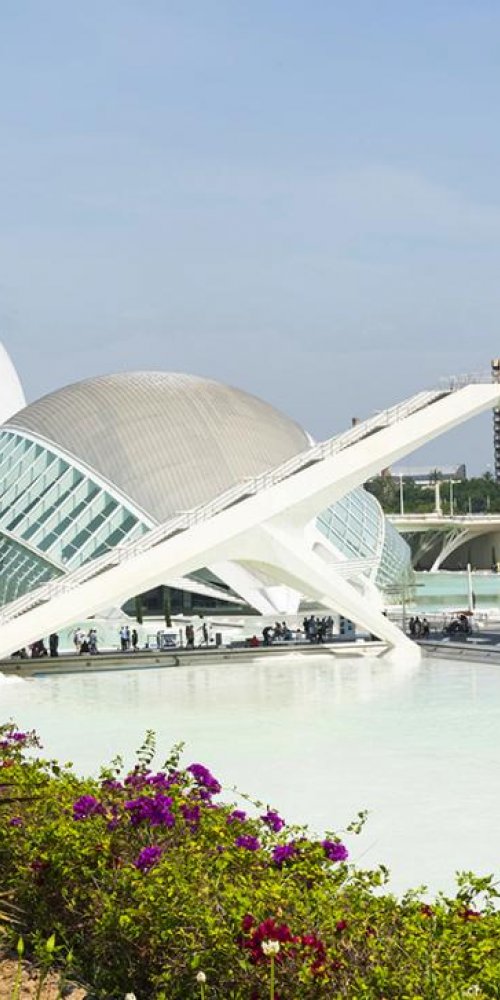

Feel the beating heart of Valencia as you step onto its bustling public transport system: the rhythmic beeping of ticket barriers, tram bells chiming delicately in the Valencian breeze, and lively chatter weaving through a tapestry of six languages. Whether you’re darting through the city’s medieval lanes, or cruising past the futuristic City of Arts and Sciences, the smooth hum of metro trains and the gentle jingle of bike-share locks echo the city’s vibrant pulse. That moment I first climbed the cathedral tower and glimpsed the sprawling network below, the mosaic of buses, trams, and bikes became more than just vehicles - they were your key to Valencia’s soul.

Why should you embrace public transport in Valencia, ES, over renting a car or hailing taxis? The answer lies as much in your wallet as in your sense of adventure. Public transit here is surprisingly economical - those €1.50 single tickets stretch farther than you think, while daily and multi-day passes cut costs for wanderers planning to absorb the city’s sights across multiple days. I vividly recall my first Metro ride zooming past Valencia’s orange groves, saving me time while wallets stayed happy.
Speed is another winner. The metro network, with its punctual trains, often outpaces taxis stuck in traffic-clogged corridors, especially during the bustling Siesta and evening rush hours. Trams glide serenely along scenic routes missed by buses, offering a picturesque alternative for explorations. Plus, combining metro, tram, and bus lets you tailor your journey with a flexibility few cities boast.
Environmentally, choosing the tram or metro helps keep Valencia’s air clean and skies bright. The city’s green commitment means many vehicles run on electricity or low-emission fuels. Travelling sustainably contributes directly to preserving iconic spots like the Turia Gardens and the Albufera Natural Park, ensuring future visitors can marvel just as you do.
| Mode | Lines | Peak Frequency | Night Service |
|---|---|---|---|
| Metro Valencia, ES | 4 | Every 4–7 minutes | Limited Friday & Saturday nights |
| Tram Routes Valencia, ES | 6 | Every 10–15 minutes | No |
| Bus | 100+ | Every 7–20 minutes, depending on route | Selective night routes |
| Ferry | 1 main route | Hourly | No |
| Bike-Share (Valenbisi) | 3500+ bikes, 275+ stations | Instant availability | 24/7 access |
This layered network makes getting around Valencia a breeze. The metro forms the backbone, connecting suburbs to the centre; trams and buses provide last-mile coverage to historic quarters and beaches. You’ll find seamless transfer points - especially at stations like Xàtiva and Benimàmet - where hopping between modes feels natural. I’ve always admired the punctuality here; for example, the tram service on Line 4 offers frequent runs to the beautiful Malvarrosa beach during summer afternoons. Just beware, though, that night services are patchy, so plan accordingly.
Understanding peak travel times can save you time and stress on Valencia’s metro and bus systems. Weekday rush hours roughly span 07:30–09:30 and 17:00–19:00, when trains and buses tend to be crowded, especially those serving business districts like Àngel Guimerà and the University campus.
Off-peak travel, particularly mid-day and late evening, offers quieter rides and easier seating. I recall wandering on a Sunday morning tram route to the Albufera - it was blissfully uncrowded, letting me admire the wetland views calmly.
Using contactless payment daily caps can be a strategic choice: you won’t spend more than €8.00 no matter how many trips you take, perfect if your plans vary unpredictably. Just remember to tap in and out correctly each time.
Local buses deploy extra vehicles during peak periods, but some routes have limited night services. A handy tip: avoid last-minute rush by checking schedules on the EMT València app for real-time updates.

Valencia’s transport system is commendably accessible, with low-floor trams and buses equipped with ramps. Metro stations include elevators and tactile paving for visually impaired travellers. Still, some older bus models might lack full accessibility; when in doubt, call customer service or check online before you board.
Parents travelling with prams will appreciate designated spaces on metro carriages and buses. The wide doorways ease boarding, but the crowded peak hours might require a little patience. Storing prams securely ensures smooth journeys for everyone.
Heading to or from Valencia Airport? The metro (Line 3 and 5) connects directly to the terminal, designed to accommodate luggage comfortably. Escalators and elevators assist with heavy bags, but during rush hour, consider quieter times or taxis if you’re carrying oversized baggage.
Yes, a single ticket is valid for 60 minutes across metro, tram, and buses within the city area. Just remember to validate each time you switch modes.
You can purchase tickets directly from bus drivers (cash preferred) or use ticket machines and apps for convenience. Contactless payments are increasingly common, but cash remains important on some routes.
All metro stations and trains offer wheelchair accessibility with elevators, ramps, and tactile paving. It’s one of the most user-friendly systems for people with reduced mobility.
Absolutely. Transport passes Valencia, ES offer excellent value, particularly if you plan multiple trips per day. Combined city cards also add museum entries, enhancing your experience.
Now that you’ve mastered the essentials of public transport in Valencia, ES, feel free to share your own tips or questions below! Don’t miss signing up for our newsletter to get insider updates on travel and transit across Europe. Safe travels - Valencia’s charm awaits you at every stop.

Additional articles from our network with useful insights about Valencia.